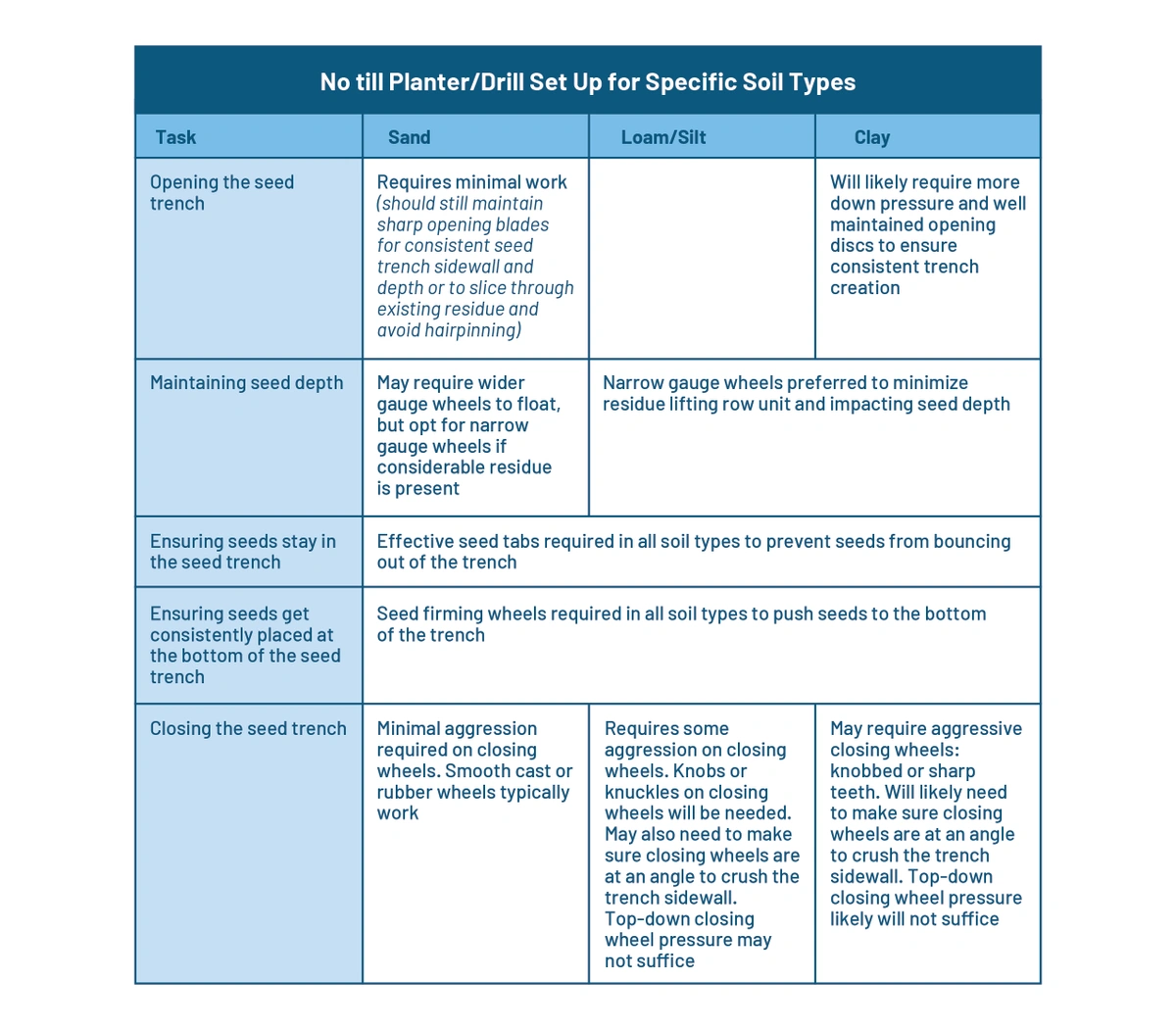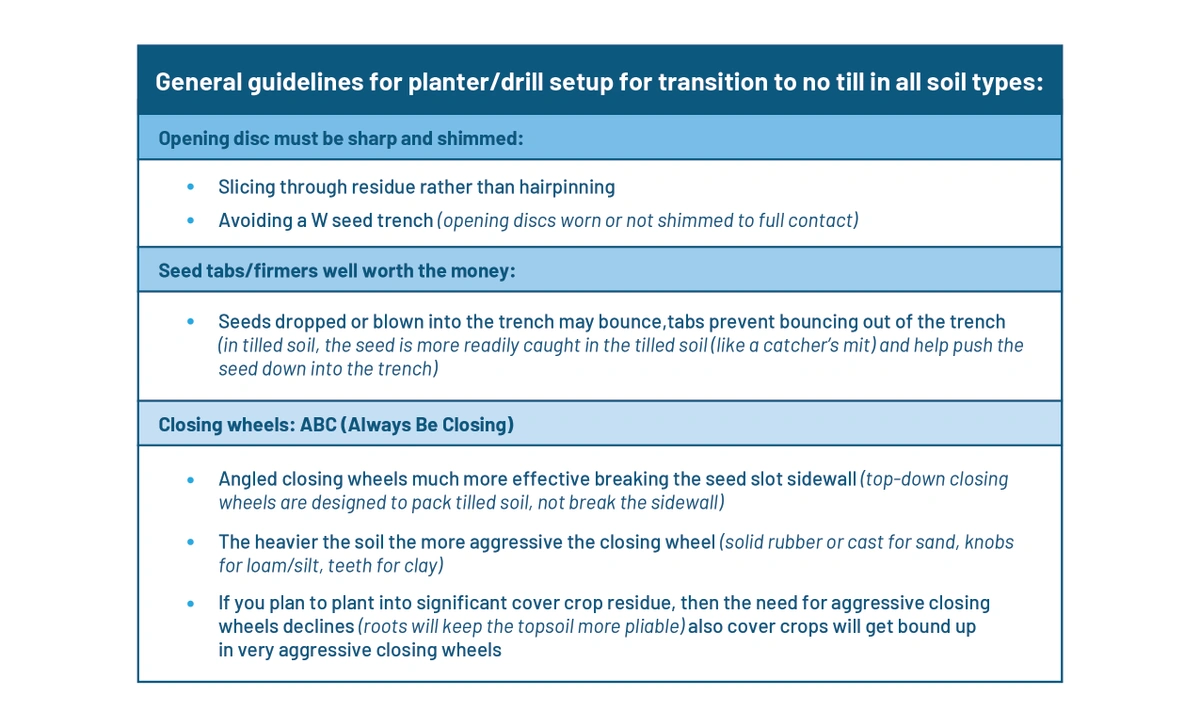Equipping your farm for no-till success: planter and drill attachments
Summary: Considerations when equipping drills and planters for no-till success
Stop me if you’ve heard this one before. You tell a neighbor you are considering no-till. Your neighbor, wanting to be helpful, warns you that he tried it 15 years ago and it doesn’t work. Wanting to understand, you ask what happened. The neighbor replies, “Terrible stand. Drill wouldn’t stay in the ground. Needed more down pressure to cover up the seeds.” Curious, you ask, “Did you use the same drill you have?” Your neighbor quickly replies, “That doesn’t matter, you’re going to face the same problem no matter how you plant. We just need to till around here.”
Unfortunately, too many past no-till attempts ended like this—in frustration. The good news is, these issues can be avoided with awareness, preparation, and the right equipment.
There is more to no-tilling than simply NOT tilling.
No-till fundamentally demands a change in how we think about planting and how drills and planters meet the three goals of a planting pass: 1) opening the seed furrow, 2) placing the seed consistently at the bottom of the furrow at a consistent depth, and 3) closing the furrow over the seed. When broken down into these tasks, it becomes apparent how the planting equipment must change to meet each need.
When soil has been tilled, planters do not need much force to open the furrow and reach planting depth. Wider gauge wheels are required to float on tilled soil, and closing the furrow requires lightly moving loosened soil and packing it down over the seed.
Each of these actions looks quite different in a successful no-till situation. Opening discs must be sharp to cut through residue and to open the furrow. Gauge wheels should be narrow to minimize row uplift over heavy residue. Seed tabs prevent seeds from bouncing out of the firm furrow soil. And instead of using closing wheels to pack down loose soil over the furrow, no-till planting equipment should have closing wheels placed at an angle to break the side walls of the furrow so they can crumble over the seed—this also helps prevent reopening when dry weather hits.
Keeping these differences in technique in mind will significantly improve your no-till planting experience and help you avoid typical pitfalls
Have more questions about equipping your farm for no-till success? A carbon farming expert can help you transition to reduced tillage or no-till. Ready to dive deeper into no-till benefits? Explore our agronomic tool to see savings from this transition. Want to learn more about your soil? Speak to a regenerative farming expert by reaching out here.




